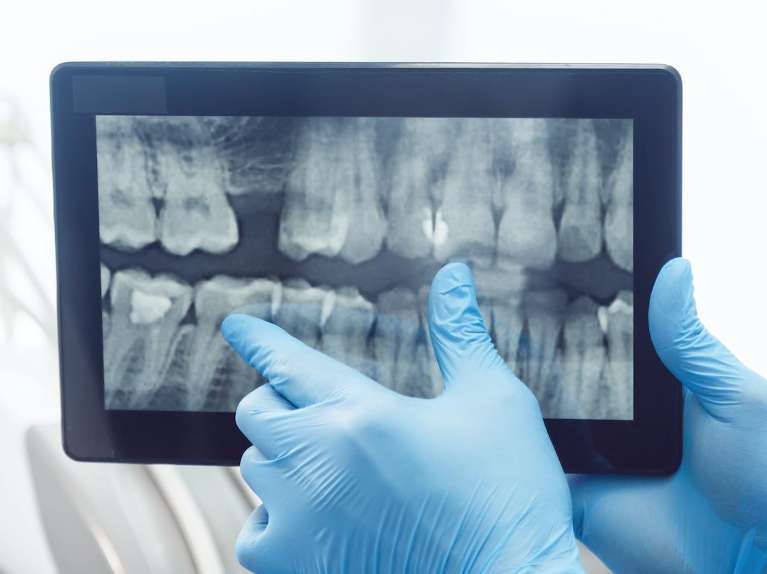
The threat of having to get any type of x-ray can be unsettling. They can sometimes point to an issue that can’t be diagnosed from the surface. Dental x-rays are an effective method for troubleshooting and preventing unwanted pain and agony down the road. Issues like cavities, tooth decay, and structural concerns with your jaw are a few of the things that can be easily detected.
Regardless of your age and overall oral health, you may have had experience with dental x-rays in the past. But while a dental x-ray, also known as a radiograph, is fairly common, many are unaware of the multitude of ailments that can be diagnosed with this simple procedure.
Dental X-Rays: The Basics
Dental x-rays are broken up into two different category types: Intraoral and Extraoral.
Intraoral x-rays are the more common of the two because they focus on everything inside the mouth. They show your teeth from different angles within your mouth and there are several depending on the situation.
The Bitewing helps your dentist survey your crowns and can detect cavities. It involves a piece of paper that you bite down on during the x-ray which helps the dentist see how your crowns match up.
Other types of intraoral x-rays include the Occlusal which tracks the progress and development of your teeth’s alignment and the Periapical that shows the whole tooth from the crown and past the root where it is attached to the jaw.
Extraoral x-rays take a bigger approach to your mouth as much of what they show detect dental problems that are associated with the jaw or skull. They focus on things like tumors, saliva concerns, jaw realignment, and more. Extraoral x-rays are very versatile and their methods range from scanning the outside of your entire mouth (panoramic) to 3-D imaging (MRI imaging), and even through dyes that get injected into the salivary glands (sialogram).
At What Age are Dental X-Rays Necessary, and How Often Should You Get Them?
The age at which you get your first dental x-ray, and how often you will need to get them in the future depends completely on the patient. Most of the time, children receive them regularly as a preventative step if their dentist has questions about their teeth spacing or structural matters.
As for x-ray frequency, visiting your dentist regularly will determine how often they are necessary for you. There are, however, some other situations that could affect how often you will be seeing your dentist:
- Smokers
- Dry-mouth sufferers
- People with sugary diets
- People with periodontal disease
Are Dental X-Rays Dangerous?
The short answer is: no! As is the case with all x-rays, they do emit radiation, but the amount is very small, and not sufficient enough to raise concerns. At Surf City Dental, we take the proper precautions and suit you up with a lead apron or smock for protection for your x-ray. The only group that are unable to get x-rays are pregnant women, as it can be dangerous for their undeveloped baby.
If you have had your reservations in the past about getting an x-ray done, don’t fret! At the end of the day, dental x-rays are a momentary procedure in exchange for big results. The pros far outweigh the cons, and if something is detected a dental x-ray could save you some money, and tears, in the long run.
Contact Surf City Dental to learn more about our dental x-ray experience and get some more tips from Dr. Parr!